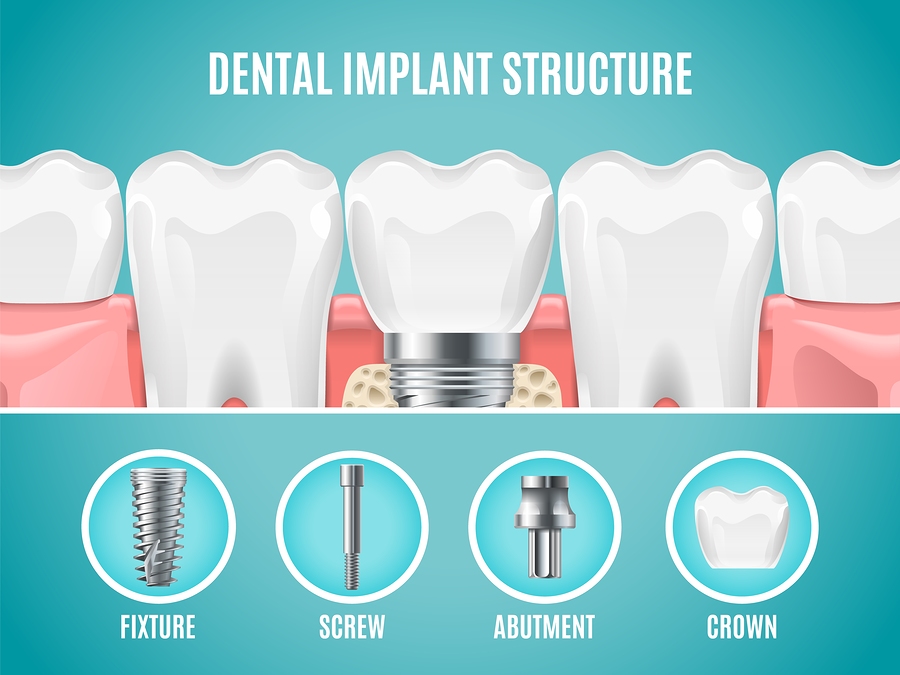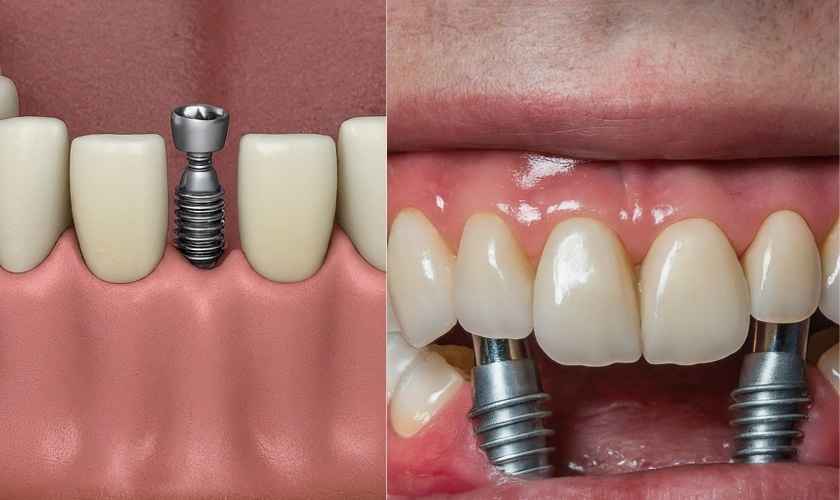8 Simple Techniques For Dental Sense
8 Simple Techniques For Dental Sense
Blog Article
The Dental Sense Statements
Table of ContentsThe Main Principles Of Dental Sense All About Dental SenseAbout Dental SenseNot known Facts About Dental Sense
are clinical tools operatively implanted right into the jaw to recover an individual's ability to eat or their appearance. They provide support for artificial (fake) teeth, such as crowns, bridges, or dentures. When a tooth is shed as a result of injury or condition, an individual can experience issues such as fast bone loss, defective speech, or changes to eating patterns that cause discomfort.Dental dental implant systems contain a dental implant body and oral implant joint and may additionally consist of an abutment addiction screw. Cosmetic dentistry services. The oral implant body is surgically put in the jawbone in location of the tooth's root. The oral implant abutment is usually affixed to the implant body by the joint fixation screw and expands with gums into the mouth to support the attached artificial teeth
(https://sitereport.netcraft.com/?url=https://nearme.vip)Structure of The Dental Implant System choosing oral implants, talk to your oral provider about the potential advantages and threats, and whether you are a prospect for the procedure. Things to consider: Your overall wellness is a vital consider figuring out whether you are a great candidate for dental implants, the length of time it will certainly require to heal, and for how long the dental implant may remain in area.
Cigarette smoking may affect the recovery process and decrease the lasting success of the implant. The recovery process for the implant body may take numerous months or longer, throughout which time you generally have a short-lived joint instead of the tooth. the dental implant treatment: Very carefully follow the dental hygiene instructions offered to you by your dental provider.
What Does Dental Sense Do?
Implant failure can cause the need for an additional procedure to deal with or replace the dental implant system. Recovers the ability to eat Recovers cosmetic appearance Aids keep the jawbone from diminishing as a result of bone loss Preserves the health and wellness of the bordering bone and gums Assists maintain adjacent (close-by) teeth steady Boosts lifestyle Damage to bordering all-natural teeth throughout dental implant positioning Injury to the surrounding tissues during surgical treatment, such as sinus opening Injury throughout surgery (for example, fracture of bordering jawbone) Insufficient function, such as feeling like the teeth do not bite together usually A feeling that the tooth is loose or twisting in place arising from a joint screw loosening up Implant body failing (looseness of the dental implant body) as a result of systemic infection, which might be most likely in individuals with unrestrained diabetes mellitus due to local infection in bone and gums supporting the implant body due to delayed healing, which might be more probable in people that smoke Trouble cleansing the gum tissues around the dental implant, leading to bad oral hygiene read more Neglected gum disease Post-surgical pins and needles because of nerve impingement or damage Constantly inform healthcare carriers and imaging professionals that you have oral implants prior to any type of magnetic resonance imaging (MRI) or x-ray procedures.
FDA is not mindful of any kind of unfavorable events reported for MRI or x-ray procedures with oral implants. Dental implants systems are usually made from materials that adhere to global consensus standards of the International Company for Standardization (ISO) or ASTM International. These criteria have details of what makes a safe product.

A dental implant is a framework that replaces a missing out on tooth. With screw-like tools, the cosmetic surgeon inserts a dental implant right into the jawbone, and it serves as a support for an artificial tooth, called a crown. A tool called a joint connects the man-made tooth to the oral implant. The crown is customized to fit the person's mouth and match the shade of their teeth.
The 7-Second Trick For Dental Sense
Some individuals are not qualified for dental implant surgical treatment. It is for dental specialists to operate on people with: acute illnessuncontrollable metabolic diseasebone or soft cells disease or infectionIf these concerns are resolved, an individual can have the surgical procedure. In, oral specialists avoid operating on individuals with: If individuals with any of the above go through dental implant surgery, there is a greater danger of the implant falling short.

Dental implant surgery is a customized process. Give you time to heal. Attach the message and final crown, bridge or denture.
Next, your cosmetic surgeon will thoroughly put the dental implant into your jaw. Finally, your surgeon will reposition your gum tissues and shut the cut with stitches. If your implant is near the front of your mouth, your dental practitioner will certainly make a temporary tooth for you to put on until you heal. By doing this, you will not have a void in your smile while you recuperate.
The smart Trick of Dental Sense That Nobody is Discussing
Throughout the healing stage, your jawbone needs to fuse to the dental implant. This procedure can take anywhere from 3 to nine months.
When your dental implant heals, your dental professional can connect the joint (small port blog post) and your last remediation (crown, bridge or denture). This generally takes about one hour to finish and might require a second minor surgical treatment. You should not really feel any discomfort during your oral implant treatment because your supplier will certainly use medication to numb your periodontals.
Report this page